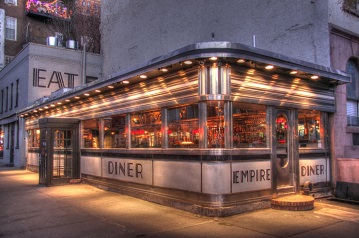 NATIONAL REPORT—Sustainability is the buzzword for diners in the current millennium, reports Forbes, with 65 percent of customers declaring that they are interested in products and services that can help them lead a greener life. Foodies are seeking to support restaurants that follow “slow food” principles, rely on renewable energies, display ethical attitudes towards staff and suppliers, and prepare food in sustainable kitchens. Since the kitchen is the heart and soul of a restaurant’s operations, businesses wishing to run greener kitchens should tackle this goal from a multifaceted perspective.
NATIONAL REPORT—Sustainability is the buzzword for diners in the current millennium, reports Forbes, with 65 percent of customers declaring that they are interested in products and services that can help them lead a greener life. Foodies are seeking to support restaurants that follow “slow food” principles, rely on renewable energies, display ethical attitudes towards staff and suppliers, and prepare food in sustainable kitchens. Since the kitchen is the heart and soul of a restaurant’s operations, businesses wishing to run greener kitchens should tackle this goal from a multifaceted perspective.
Reducing Water Consumption
Saving water involves various measures ranging from keeping pipes and faucets free of leaks, right through to upgrading dishwashers that meet Energy Star criteria. Choose a dishwashing machine that has eco cycles, adjustable temperature settings, and automatic programs that detect how full and dirty the load is, adjusting water use and temperature as required. Ensure the dishwasher is reliable and has a long lifespan (aim for 20 years to reduce wastage and save money). Use a foot pedal for handwashing sinks, compost food waste (so that waste does not have to go down the garbage disposal), and sweep and mop the kitchen floor instead of spraying it down.
Reduce Your Energy Consumption
Equipment such as fryers can waste energy when they take a long time to heat oil and when they have low oil and BTU capacities (BTU is the amount of heat necessary to increase the temperature of one pound of water by one degree). Classic equipment like American range fryers may involve a bigger initial investment than smaller fryers, but their high BTU and oil capacity, plus their quick reheating abilities, enable restaurants to save a significant amount of energy per year. Fryers should also be made of tough, quality materials such as Heavy-Duty 304 grade stainless steel. Another key measure when it comes to reducing energy consumption includes adjusting the thermostat to reduce heating and hot water expenditure (bear in mind that each degree added to heat or cool an area can add up to 5 percent more to your total energy costs). Ensure that everything from fridges to light bulbs are energy-efficient, train staff on energy-saving practices (such as closing the fridge quickly), and pack food items in your fridge in a way that promotes good air circulation.
The Little Details that Count
Show your customers that you care by applying a wide range of measures that reveal an authentic commitment to sustainability. Serve paper straws instead of plastic ones, provide take-away meals in sustainable packaging (PizzaRound, for instance, uses a 100 percent tree-free, plant-based compostable box for pizza deliveries), and consider innovative choices such as using edible cutlery made from materials like sorghum. Provide in-house diners with cloth napkins (they will love the luxury of this item and will appreciate the fact that trees haven’t been cut down to produce them), set seasonal menus, deal with local suppliers, and don’t forget to publicize your initiatives on your website and social media channels.
The vast majority of Americans are interested in supporting sustainable companies—including restaurants. To manage a business in line with this ethos, invest in energy and water reduction and adopt measures that will show customers you mean business. Inform your clients of your green policy, using social media lines to create open lines of communication and to receive feedback and suggestions.







